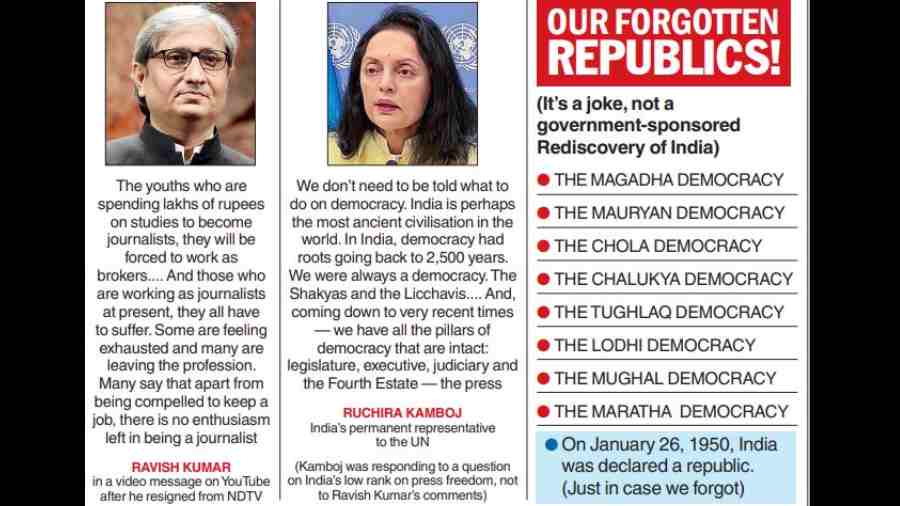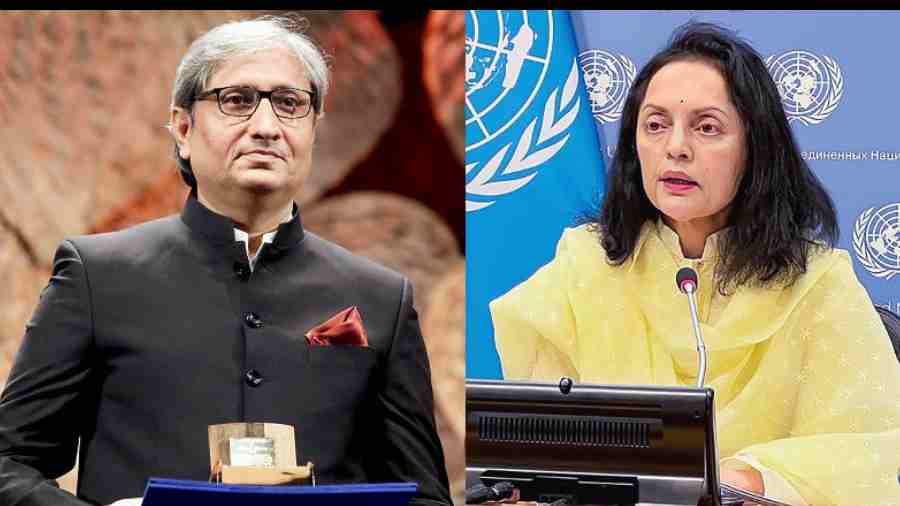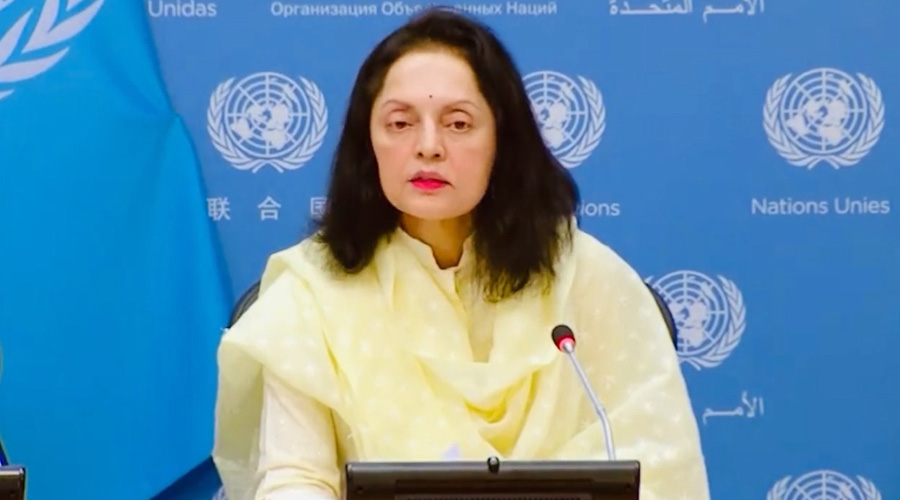The Indian government has time-travelled to find a 2,500-yearold touchstone to measure the freedom of the press in the country, insisting that the Fourth Estate is intact in a civilisation that traces its roots to the Shakyas and the Licchavis.
The declaration was made on Thursday in New York as the country’s permanent representative to the United Nations assumed the monthly rotating presidency of the Security Council.
The sweeping assertion came in the same week that journalist Ravish Kumar left NDTV, in whose promoter the Adanis acquired a substantial stake a few days ago, and posted a gut-wrenching message on YouTube that had drawn 4.6 million views till Friday night.
Kumar, who had coined the term “Godi Media” to describe those who kowtow to the Narendra Modi government, painted a grim picture of the future of journalism in India. “The youths who are spending lakhs of rupees on studies to become journalists, they will be forced to work as brokers.... And those who are working as journalists at present, they all have to suffer. Some are feeling exhausted and many are leaving the profession. Many say that apart from being compelled to keep a job, there is no enthusiasm left in being a journalist,” he said.
If statistical corroboration is needed, it is recorded in the 2022 Global Press Freedom Report brought out by Reporters Sans Frontiers. India has fallen from an already low rank of 142 to 150.

None of which was reflected in the utopian version unfurled in New York on Thursday.
India does not need to be told what to do on democracy, the country’s permanent representative to the UN in New York, Ruchira Kamboj, said in response to a question on the country’s low rank in the press freedom index while briefing the media on assuming the Security Council presidency.
“We don’t need to be told what to do on democracy. India is perhaps the most ancient civilisation in the world. In India, democracy had roots going back 2,500 years to the Shakyas and the Licchavis.... And, coming down to very recent times, we have all the pillars of democracy that are intact: legislature, executive, judiciary and the Fourth Estate — the press. And, a very vibrant social media. So, the country is the world’s largest democracy,” Kamboj said.
Kamboj said the country conducted the world’s largest democratic exercise every five years and everyone was free to say what they wished.
“And, that is how our country functions. It is rapidly reforming, transforming and changing. The trajectory has been very impressive and I don’t have to say this. You don’t have to listen to me. Others are saying this,” she added.
Now, please do not ask the decidedly un-Indian question of Shakyas Who and Lichhavis Who?
If you do, that means you have not been paying attention to Prime Minister Narendra Modi.
Kamboj’s reference to the Shakyas and the Licchavis was essentially an echo of what Modi said at the Democracy Summit hosted by US President Joe Biden last year. “The democratic spirit is integral to our civilisation ethos,” Modi had said.
The Prime Minister had added: “Elected republican city states such as Licchavi and Shakya flourished in India as far as 2,500 years back. The same democratic spirit is seen in the 10th-century Uttaramerur inscription that codified the principles of democratic participation. This very democratic spirit and ethos had made ancient India one of the most prosperous.
“Centuries of colonial rule could not suppress the democratic spirit of the Indian people. It again found full expression with India’s independence, and led to an unparalleled story in democratic nation-building over the last 75 years.”
The Licchavi clan ruled Vaishali in the sixth century BC, and the empire extended up to the hills of Nepal. The Licchavi state, according to the Bihar government website, is considered the first republican state in Asia. Like the Licchavis, the Shakyas were organised as ganasanghas (republics) with a limited footprint along the foothills of the Himalayas.
Historians have never disputed the existence of these republics but monarchies remained the dominant form of governance — even in ancient times — in India.
According to the historian of ancient India, Ram Sharan Sharma, in the republics, real power lay in the hands of tribal oligarchies. “In the republics of Sakyas and Lichhavis the ruling class belonged to the same clan and the same varna…. The republican tradition became feeble from the Maurya period. Even in pre-Maurya times, monarchies were far stronger and common,” he wrote in the NCERT textbook on ancient India that was removed during the Atal Bihari Vajpayee years.
It is not known how free the press was 2,500 years ago in that glorious India. Kamboj did not share that little detail while fielding the question on why India’s ranking had slipped in the Global Press Freedom Report.











